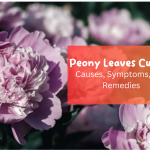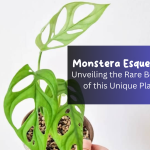When choosing between gardenia and jasmine for your garden or indoor space, understanding the characteristics and differences between these two beloved flowering plants is crucial. Gardenia vs jasmine is a standard comparison garden enthusiasts often make when seeking captivating beauty and intoxicating fragrances. In this article, we will delve into the unique features and qualities of gardenia and jasmine, helping you decide which plant suits your preferences and environment. Whether you’re drawn to the alluring scent and creamy white flowers of gardenia or the sweet, floral aroma and delicate blooms of jasmine, the gardenia vs jasmine debate will be explored, enabling you to choose the perfect addition to your green space.
Planting Season:
Gardenias are typically planted in the spring or fall when the weather is mild, and the soil is warm. Spring planting allows gardenias to establish their root systems before the hot summer. Fall planting, on the other hand, provides gardenias with ample time to develop strong roots during the cooler season, ensuring their resilience in the following growing season.
Jasmine plants are best planted in the spring or early summer when the soil has warmed up, and the risk of frost has passed. Planting jasmine during this time allows the plants to take advantage of the extended growing season. The warm temperatures encourage robust growth and increase the likelihood of abundant blooms.

Flowering Season:
Gardenias typically bloom from late spring to mid-summer, delighting garden enthusiasts with their showy, fragrant flowers. These large blossoms, measuring 2 and 4 inches in diameter, exude an elegant charm and are primarily pure white. However, certain gardenia varieties may produce yellow or pink flowers, adding delightful variations to their palette. The blooming period can vary depending on the specific cultivar and growing conditions.
Jasmine plants grace the garden with their ethereal blooms from late spring to early summer. Sometimes, jasmine flowers appear throughout the summer, extending the floral display. These delicate, star-shaped flowers exhibit shades of white or yellow, emanating a sense of purity and radiance. The clustered formation of jasmine blooms creates a breathtaking visual spectacle.
Flower Color:
Gardenia flowers are renowned for their classic beauty, predominantly displaying a creamy white color. The purity and simplicity of white gardenia blooms exude elegance and timelessness. However, specific gardenia cultivars offer delightful variations, including pale yellow or soft pink hues. These subtle deviations add a touch of uniqueness and diversity to the Gardenia family.

Jasmine flowers, too, enchant with their delicate colors. While most jasmine blossoms boast a pristine white hue, some varieties showcase yellow petals. The white jasmine flowers symbolize purity and innocence, casting a serene ambiance in any garden setting. The yellow jasmine flowers infuse warmth and vibrancy, giving the landscape cheerfulness and joy.
Planting Zone:
Gardenias thrive in planting zones 8 to 11, encompassing regions with mild winters and warm, humid summers. These temperate or tropical climates provide the ideal conditions for gardenias to flourish. They struggle in areas with freezing temperatures and are susceptible to frost damage. In colder regions, gardenias can be successfully cultivated in containers, allowing for portability and flexibility to bring them indoors during winter.
Jasmine plants exhibit a broader range of adaptability regarding planting zones. While specific jasmine species may vary, they generally thrive in zones 6 to 11, spanning a wider geographic area than gardenias. Certain jasmine varieties, such as the common jasmine (Jasminum officinale), exhibit more cold-hardy characteristics, allowing them to withstand temperatures down to zone 6.
Stems & Branches:
Gardenia plants feature an upright growth habit, boasting dense, bushy foliage that is an excellent backdrop for the striking blooms. The stems and branches of gardenias are woody and display a greenish-brown hue. Regular pruning of gardenias helps maintain their desired shape and stimulates branching, resulting in a fuller and more vigorous plant.
On the other hand, Jasmine plants possess a climbing or vining nature. With their flexible stems, jasmine plants are known to twine and climb on trellises, fences, or other support structures. These green branches can be trained or shaped to suit various garden designs, allowing jasmine to add vertical interest and architectural beauty to the landscape.

Leaves:
Gardenia leaves contribute to the overall allure of the plant. These glossy, dark green leaves exhibit an oval shape and possess a leathery texture. Arranged in an opposite pattern along the stems, gardenia leaves create an appealing contrast against the delicate white or colored blooms. The lush foliage adds an element of lushness and depth to garden beds and container arrangements.
Jasmine leaves are equally captivating, characterized by their bright green color and multiple elongated leaflets. These leaflets are arranged in an opposite or alternate pattern, creating an attractive and intricate foliage display. The foliage of jasmine plants imparts a sense of vibrancy and liveliness, serving as an eye-catching feature even when the flowers are not in bloom.
Scent Profile:
The scent of gardenia flowers is often described as intoxicating, sweet, and heady. Gardenia fragrance carries an exotic and captivating aroma that instantly captivates the senses. This alluring scent has found its way into the perfume industry, candles, and various scented products, leaving a lingering impression of sophistication and romance.
Jasmine, too, is celebrated for its enchanting fragrance. The scent of jasmine flowers is often characterized as sweet, floral, and romantic, captivating all who encounter it. Jasmine fragrance is highly sought after in the perfume industry, where it is utilized as a critical ingredient in creating luxurious and timeless perfumes. Additionally, the soothing and relaxing properties of the jasmine scent make it a popular choice in aromatherapy and beauty products.
Varieties of Jasmine
There is a wide range of jasmine varieties, each offering its own unique characteristics and beauty. Let’s explore some popular jasmine cultivars:
- Arabian Jasmine (Jasminum sambac): Known for its intense fragrance, It produces small, white flowers that exude a powerful, sweet scent. It is a popular choice for perfumes and garlands in many cultures.
- Winter Jasmine (Jasminum nudiflorum): Winter jasmine blooms during the winter months when most other plants are dormant. It features bright yellow, trumpet-shaped flowers.
- Starry Wild Jasmine (Jasminum multipartitum): Starry wild jasmine is a sprawling, evergreen shrub with small, star-shaped, white flowers that emit a subtle fragrance. It is native to Africa and thrives in warmer climates.
- Italian Jasmine (Jasminum humile): Italian jasmine showcases bright yellow flowers with a delicate fragrance. It is a low-growing, spreading shrub commonly used as ground cover or in rock gardens.
These are just a few examples of the numerous jasmine varieties available. Each type brings its beauty and scent, allowing you to choose the perfect jasmine to suit your preferences and garden environment.
Varieties of Gardenia
Gardenias offers a diverse array of cultivars, each with its unique characteristics and beauty. Here are some popular varieties of gardenia:
- Gardenia jasminoides ‘Kleim’s Hardy’: ‘Kleim’s Hardy’ is a cold-hardy gardenia variety that can withstand temperatures as low as 0°F (-18°C). It features creamy white, highly fragrant flowers and is ideal for gardens in colder regions.
- Gardenia jasminoides ‘Radicans’: ‘Radicans’ is a dwarf gardenia variety with a spreading habit, making it suitable for ground cover or container planting. It produces small, single white flowers and a slightly milder fragrance than larger gardenia varieties.
- Gardenia jasminoides ‘August Beauty’: ‘August Beauty’ gardenia displays large, double flowers with a creamy white color and a captivating scent. It is a compact shrub that blooms throughout summer, adding beauty and fragrance to the garden.
- Gardenia jasminoides ‘Frostproof’: ‘Frostproof’ is a gardenia cultivar more tolerant of cold weather than many other varieties. It produces white, double flowers with a sweet fragrance and is a reliable choice for gardens in colder regions.
- Gardenia jasminoides ‘Golden Magic’: ‘Golden Magic’ gardenia stands out with its unique foliage, which features green leaves with striking golden-yellow variegation. It produces fragrant white flowers, adding a touch of visual interest to the garden.
These are just a few examples of the many gardenia varieties available. With their beautiful blooms and enchanting scents, gardenias can add a touch of elegance and sophistication to any garden or landscape.

Which Smells Better, Gardenia or Jasmine?
Determining which scent is better, gardenia or jasmine, is subjective and dependent on personal preference. The captivating scent of gardenia exudes sweetness and richness with a touch of exoticism that is hard to resist. On the other hand, the aroma of jasmine offers a delicate, romantic, and soothing floral fragrance that can transport you to serene surroundings. Both scents are highly cherished and have unique qualities, making it a matter of personal taste to determine which one smells better.
Conclusion:
Both plants bring distinct charm and sensory delights in the gardenia vs. jasmine debate. Gardenias impress with their large, creamy white flowers and intoxicating scent, while jasmine captivates with its delicate, sweet-smelling blossoms. Ultimately, the choice between gardenia vs jasmine comes down to personal preference and the specific requirements of your gardening space. Whether you opt for gardenia’s elegance or jasmine’s romantic allure, both plants can transform your garden or indoor area into a fragrant haven. Embrace the beauty and fragrance of gardenia vs jasmine, and let these remarkable plants enhance your surroundings with their enchanting presence. Read article about Pothos With Holes Inside and Elephant Ear Stems Bending in Avi Hoffman Garden.
Table highlighting the differences between gardenia and jasmine:
| Characteristic | Gardenia | Jasmine |
|---|---|---|
| Flower Color | Predominantly creamy white, can have variations of yellow or pink | Mostly white, some varieties have yellow blooms |
| Planting Season | Spring or fall | Spring or early summer |
| Flowering Season | Late spring to mid-summer | Late spring to early summer, sometimes extends into summer |
| Planting Zone | Zones 8 to 11 | Zones 6 to 11 |
| Stems & Branches | Woody greenish-brown | Flexible green branches that twine and climb |
| Leaves | Glossy, dark green, oval-shaped, leathery | Bright green with multiple elongated leaflets |
| Scent Profile | Intoxicating, sweet, and heady | Sweet, floral, and romantic |
| Strongest Smelling Variety | N/A | Jasminum sambac (Arabian jasmine or sampaguita) |
Please note that the “Strongest Smelling Variety” column is left blank for gardenia as there isn’t a specific variety known for being the strongest-smelling. The jasmine variety mentioned, Jasminum sambac, is recognized for its intense fragrance, but it is not a gardenia plant.
FAQ Gardenia vs Jasmine
A: While gardenia and jasmine have distinct and captivating scents, they smell different. Gardenia flowers emit an intoxicating, sweet, and heady fragrance with exotic notes. On the other hand, jasmine flowers offer a sweet, floral, and romantic scent. While there may be some similarities in their floral profiles, the specific aromas of gardenia and jasmine have unique characteristics that set them apart.
A: Yes, gardenia is known for its strong scent. The fragrance of gardenia flowers is often described as powerful and heady. When gardenia blooms, the smell can permeate the surrounding area, filling it with a rich and captivating aroma. The strength of the gardenia scent can vary slightly depending on the specific variety and growing conditions, but it is generally considered a robust and highly fragrant scent.
A: Jasmine is renowned for its exquisite fragrance. The scent of jasmine flowers is often described as sweet, floral, and romantic. It possesses a delicate and intoxicating aroma that captivates the senses. The smell of jasmine is widely considered soothing and relaxing, creating a sense of calm and tranquility. It has timeless and enchanting quality has made it a popular choice in perfumes and scented products.
A: Among the various jasmine species, Jasminum sambac, also known as Arabian jasmine or sampaguita, is often regarded as the strongest-smelling jasmine. This particular jasmine species produces intensely fragrant white flowers that release a powerful and captivating scent. The aroma of Jasminum sambac is highly sought after in the perfume industry and is known for its long-lasting and intense fragrance.







